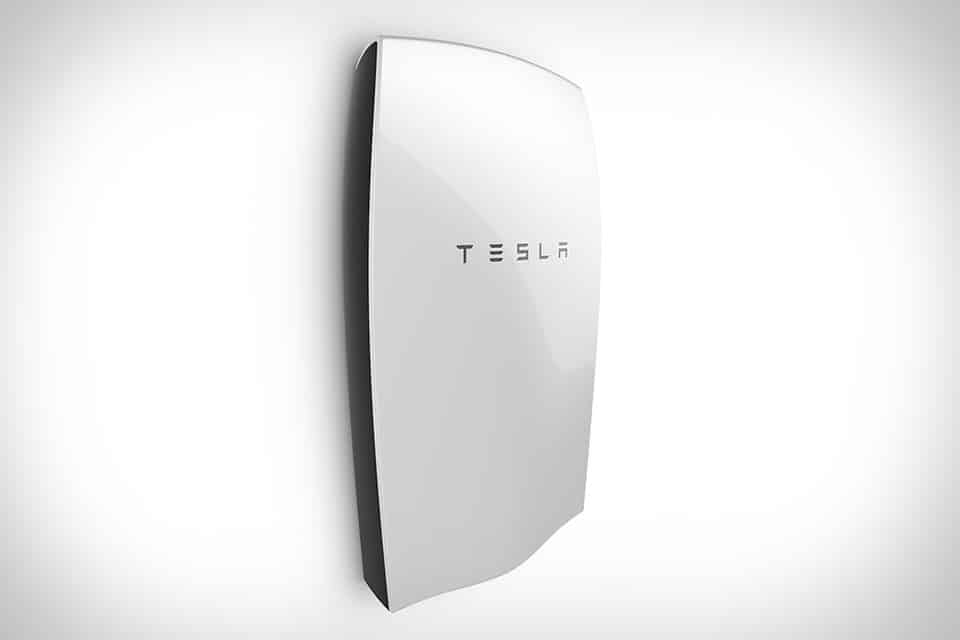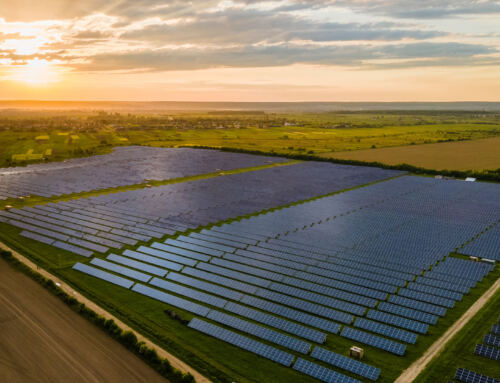In grand fashion this week, Elon Musk delivered a well publicized announcement about Tesla’s newest offering, a sleek home battery storage model dubbed the Powerwall. The Powerwall is a wall mounted collection of Tesla batteries designed to capture and store solar power so that a homeowner can run their home when the sun is not shining. The 10 kilowatt hours battery model is set to retail at $3,500.
Battery backup systems are nothing new. They have been around for years and Native has designed and installed quite a few of them. But battery storage adds considerable expense and complexity to a solar installation. What allows Tesla’s Powerwall to be small enough to hang on the wall is the leveraging of their compact lithium ion batteries, the same technology which is used to power their electric vehicles. The extensive research and development of this chemistry in the automotive arena has fueled the rapid price decline over the past several years. While these batteries enjoy some nice benefits over the incumbent lead acid battery technology, they are just now becoming cost competitive.
This announcement has sparked a interest from a lot of homeowners in Texas…but are the economics compelling enough that you should be excited too?
Over 90% of our clients with solar have no home storage, and that is perfectly fine. The grid acts as the battery. When the solar system generates extra electricity, it is fed back to the grid. Likewise, at night when you need power, you just take it from the grid. So if the grid is such a great battery, why should you consider adding home storage?
There are some situations in which home battery storage makes sense.
Off Grid Living – Texans building a small home or cabin on a remote piece of land may not have ready access to the grid. Running utility poles and lines can be cost prohibitive. In these cases, solar plus batteries may be the most economical way to reliably power their home. Emerging markets with little existing electrical infrastructure like in many parts of Africa and India are already target markets for battery storage systems.
Reliable Backup Power – Even though Austin Energy on average has better than a 99.99% uptime rating, some consumers have critical electrical loads, such as servers, that they can not afford to have dropping out even for a minute. In this case, having these circuits routed to a battery bank may be justified.
Utility Rate Structures – There are various utilities across the country that disincentivize solar customers from sending electricity back to the grid. This can be accomplished in different ways using the utility rate structure. In the case where the utility is not paying an equitable value for your solar energy, it may make sense to capture as much solar electricity as possible and use it in the home rather than send it back to the grid. Batteries allow you to accomplish this. As of today in Texas, many of the utilities fairly value the electricity that they receive from solar customers. There are some exceptions to this rule and I encourage you to send us any questions if you are unsure about your utility policy.
Zombies – If you’ve seen Walking Dead and are envisioning that future, then you need batteries tied to your solar. Today.
I applaud Elon Musk on the Powerwall announcement. He has communicated a bold and hopeful vision of where the energy market will be heading. He is also jumpstarting a synergistic market for his Telsa and SolarCity companies. We are excited about the sudden conversations that everyday people are having about the energy future. We are all talking about energy storage technology and how we can personally participate in changing our energy profile from fossil fuels to renewables. Isn’t that what this is all about?
Tesla Batteries Tesla Batteries Tesla Batteries Tesla Batteries Tesla Batteries Tesla Batteries

































I had been clearing a path to extend power from Bandera Electric Coop to my building site on my seven acres there. After seeing the Elon Musk presentation, I made a back of the envelope calculation and decided to go with the solar installation with the Tesla Powerwall and be entirely off grid. With the energy efficiency of the home design, it was a very easy and affordable decision to make. I’ll turn the part of the land cleared so far into a garden. This is a real game changer that’s available now, not just another “someday” solution.
Thanks for picking up this story. It seemed to me that another use case for this battery, apart from solar storage, is rate reduction. Charge the battery at night when rates are low and draw from it during the day when rates are high. Is 10 killowatt hours enough for an average 2500 sq ft home in Austin? Can you give a concrete example of cost vs usage that would make the Tesla battery make sense? From your experience, how does the Tesla battery compare to existing/previous solutions?
Thanks for your newsletters/blog.
Chris
A very well written article. All points valid. My only comment is that the price of these needs to come down to less than $100 per kwh. What Elon Musk has done, by introducing this technology, is to give solar owners a way of getting around unfriendly utility companies and anti-netmetering politicians who wish to put impediments in the way of residential solar. Congrats to Elon.
Let me know about availability and pricing. I will be installing an off-grid system soon.
I love this idea! I would be interested in knowing if this would be compatible with the Enphase micro inverters I’m using or if I would have to go to a standalone inverter to use it.
@Stephen – When you are faced with the expense of running new utility lines to a home, it is a good idea to look at the economics of battery storage. Living off grid is feasible, but it does require a different mind set than on grid living.
@Chris – Arbitraging the market can be used in places with time of use rate structures. We don’t see much opportunity for that now with the utility rate structures in central Texas, but this is definitely an option in other markets. An oversimplified but illustrative example: I have a 2400 sq.ft house and average about 1100 kwh/mo. That breaks down to 37 kwh/day. One 10kwh Powerwall would power me for about 6 hours. Figuring out how much storage I need is a bit more complicated discussion and what makes sense to one homeowner will not make sense to another. Give us a call if you want to discuss further.
@Richard – I agree with you…and we will see battery prices continue to fall over the next several years.
@Gary – Leave your information on our Get Started page if you have not already.
@Mike – I don’t yet know all the details around how the Powerwall will integrate with existing systems. We can stop by sometime and chat more about it. We all know where you live.